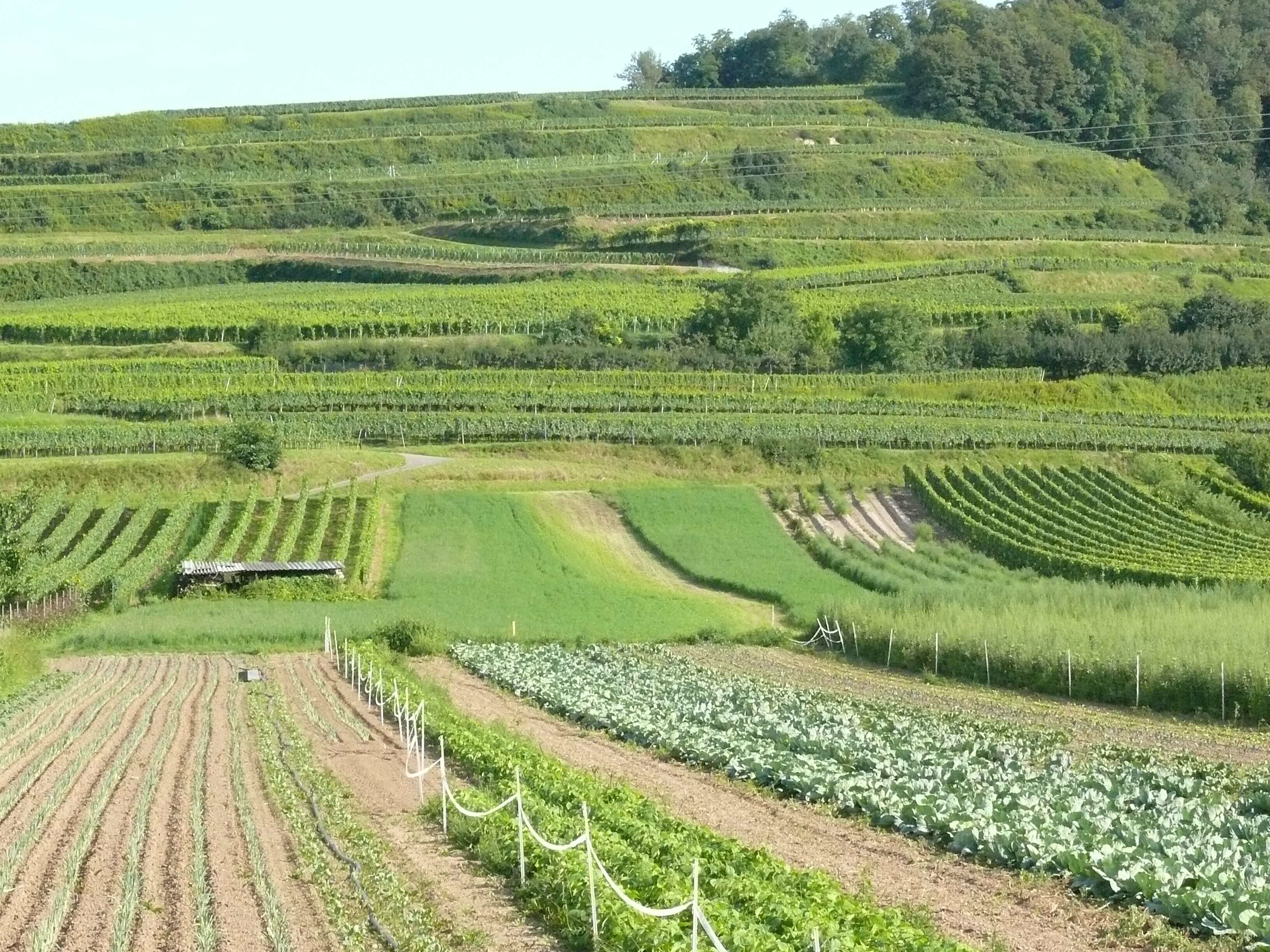
Habitats
Semi-arid grasslands:
The semi-arid grasslands represent the most species-rich cultural landscape in Central Europe. They cover large areas of the central Kaiserstuhl as well as some areas in the northwest and west of the small mountain range. There are also small areas on slopes. Typical semi-arid grasslands have been created by human influence, through certain forms of cultivation.
After the forest was cleared, nutrients such as nitrogen were removed from the soils over centuries by mowing and grazing. Fertilisation on a larger scale did not take place.
Semi-arid grassland plants are starvation artists that have managed to live even in the leanest conditions. The dryness does not cause any problems for the plants, because the soils are deeper than those of the fully dry grasslands.
Plants such as meadow sage, sunflower and many orchid species occur on the semi-arid grasslands. Animals include the green lizard, the praying mantis, the butterfly moth, many butterflies and moths and rams.
When mowing is abandoned, bushes spread. On some steep slopes, goats are allowed to graze, which also eat small bushes. On large areas, such as the Badberg, Haselschacher Bucks and Schelinger Matten, mowing is carried out, but strips of old grass are left so that insects can seek shelter in them.
Fully dry grassland:
The great diversity of species and the high proportion of rare species of fauna and flora make the dry grasslands of the Kaiserstuhl a major attraction for botanists, zoologists and numerous biologists and nature lovers.
The rocky all-dry grasslands present extreme living conditions for animal and plant species: due to a lack of water, temperatures of up to 70°C on the ground on sunny days, strong temperature fluctuations between day and night and icy winter nights. In the Kaiserstuhl, this habitat, which is desert-like by Central European standards, can be found in small areas on rock-strewn steep slopes with thin soil layers in south to south-west positions.
There is not enough water for the growth of trees and shrubs, so that only highly specialised plants and animals adapted to drought can survive. For example, the leaves of the white wall pepper can store water. They only open their stomata at night. This keeps their water loss very low.
Many leaves of dry grassland plants have narrow, hairy or wax-coated leaves to keep evaporation as low as possible.
Hollow paths:
Hollow paths in the loess were created by erosion of the loess: by people always driving the same paths to their vineyards, gardens, etc. with oxcarts, the lime skeleton (lime content in loess approx. 30%) was crumbled and the next heavy rain washed out the path deeper again. In this way, gorges up to 25 m deep were formed over the centuries. These paths were called Kinzige or Gass.
Before there were roads, the loess ravines were the only connecting paths between the villages. Small paths, so-called Schlucke, lead up to the vine terraces along the steep slopes of the hollow ways. In the 1970s, many of the sunken paths were filled in during the renewal of the vineyards and are now irretrievably lost.
Today, all the sunken paths are under nature conservation, and the diversity of habitats offered by the sunken paths has been recognised. Nowadays, deep erosion no longer takes place. Some of the paths are paved with grass pavers. Because people use the sunken paths for walking or hiking, they do not become overgrown. If they are not used, they quickly become overgrown.
Wild bees, digger wasps and the bee-eater breed on loess walls.
Forests:
Forests cover about one fifth of the Kaiserstuhl. Beech forests predominate over the entire area, taking up about 40% of the forest area and covering the north and east facing slopes of the horseshoe-shaped main ridge. As a result of the dense canopy of beech trees, flowering plants have to adapt their vegetation period to the seasonal development cycle of beech trees. Long before the canopy closes, daphne, wood anemone or wood violet have opened their flowers and attract flower-visiting insects far into the forest.
On south-exposed volcanic slopes with a low loess layer one finds the most remarkable forest community of the Kaiserstuhl: the downy oak forest. The downy oak originates from the Mediterranean region and is therefore heat-loving. Of all the native oak species, it is best adapted to the extreme summer drought. The dense hairs on the undersides of the leaves and shoots, which give the oak its name, serve as protection against excessive evaporation during periods of strong sunlight and against water loss during dry periods.
The oak-hornbeam forest stands out on some soil-acid volcanic crests due to its great species richness of the tree and shrub layer. Remarkable is the increased occurrence of the wild service tree, formerly used as a cider additive, which forms a second tree layer together with the hackberry.
Fern-rich ash-maple shade forests mark particularly humid sites, while the brook ash forest lends floodplain character to individual valley bottoms with its sedge and horsetail stands.